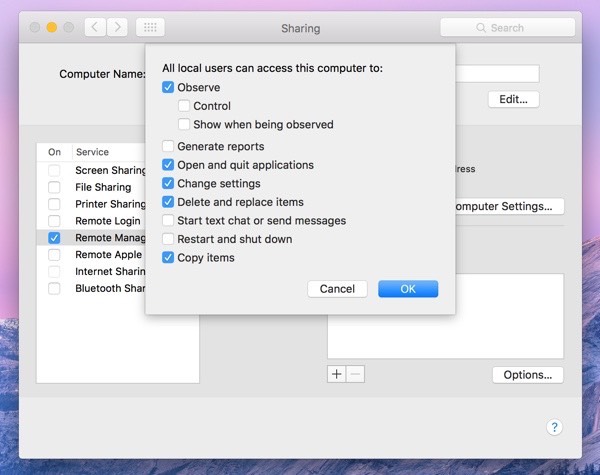

Video performance in VNC is pretty fast when connecting Mac to Mac, slightly less so when connecting from a PC. RealVNC is a good choice when you need a small, simple client just to make the initial connection to the server. With older versions of RealVNC some people have had trouble establishing the connection (usually with a “connection refused” error) but most were able to get it working by clicking on Options and setting Colour Level to Full. In my testing, I used the latest RealVNC client available from the website (5.0.1 at the time of this writing) and I had no trouble connecting to the Mac on the first try. All connections to MacStadium will have to traverse the Internet. In practice (and especially when connecting to another computer on your own local network) this is not such a great danger, but where data must be transmitted over the public Internet and where security is a primary concern this sort of unencrypted communication should be avoided.
Vnc for mac mini free#
Where the paid versions of RealVNC are capable of encrypting the session data, this is not the case with RealVNC free. That means that unless you take additional precautions, RealVNC free will transmit your keystrokes and screen images across the network in an unsecure manner, which could in theory expose them to a hacker.
Vnc for mac mini software#
Because I am discussing only free software in this article I am going to gloss over the Personal and Enterprise versions of RealVNC and focus on the Free edition, but it’s worth knowing that these other versions can be had for a nominal fee. Today there are three versions of it, one that is free and two more that are for sale. RealVNC is the closest thing we have to a standard VNC client due to its long history and close association with the original codebase. For this article, I am going to discuss the two most popular VNC clients as well as two alternatives to VNC. This means that not only is VNC available on several different platforms, most platforms have more than one version with slightly different feature sets. Fortunately, most of these features can be automatically negotiated during the connection process, so as a VNC user you usually do not care much which specific version of server you are connecting to - for the most part it Just Works.
Vnc for mac mini code#
PC or Linux to Mac connections have been known to occasionally exhibit buggy behavior but in most cases, you will have no trouble getting it to work if your software is up to date.īecause it is based on an open-source project, VNC development was subject to "forks" where different groups of programmers began with the same base code and then created different versions of the tool to suit their needs. Mac to Mac sessions are probably going to be pretty reliable due to the same version of VNC code being used on both sides of the connection. Of course, the devil is in the details, and not all VNC implementations are 100% compatible. This makes cross-platform remote control a simple matter since a VNC client running on a PC can easily connect to a VNC server running on a Mac, for example. VNC was originally developed for use on Unix systems but has now expanded to include a client and server version for virtually all popular computing platforms. The last two are supplied in an e-mail from MacStadium after you sign up. All you will need are a VNC client, the IP address of the server, and the password. In a just-out-of-the-box Mac mini, this feature is disabled, but since you need a way of connecting to your server to set it up, MacStadium has already enabled the screen sharing feature in the Sharing preferences panel which allows you to make a VNC connection from the get-go. VNC, Generally Speaking, Mac OS X comes preinstalled with a remote control package called VNC (for Virtual Network Computing). This article will cover four popular (and free!) remote control programs as well as the pros and cons of using each of them. Nearly all modern servers are "headless" (meaning they have no dedicated monitor, keyboard, or mouse) and are controlled over a network using remote desktop software. The first question on your mind is probably "How do I control this thing?" So you have a MacStadium hosted server and you're all ready to do something with it.


 0 kommentar(er)
0 kommentar(er)
